The Tar Heel State's Trusted Dredging Specialists
HOA & Community Lake Dredging in Wake Forest, North Carolina
As part of the Triangle and Eastern Piedmont community network, we specialize in stormwater retention ponds and HOA lakes around Wake Forest, addressing sediment buildup from suburban development, nutrient-driven algae issues, and reduced water clarity for better resident enjoyment and functionality near Falls Lake, Jordan Lake, Harris Lake, and the Neuse River Basin.
Why Choose Us for Wake Forest Dredging Projects?
Proven expertise in Triangle & Eastern Piedmont's unique waterway challenges
-
🏘️ HOA & Community Lake Expertise
Tailored solutions for retention ponds, neighborhood lakes, swim areas, and community water features in Wake Forest's master-planned developments, ensuring minimal disruption and enhanced resident satisfaction.
-
🌧️ Stormwater & Retention Pond Dredging
Addressing rapid sediment buildup from Wake Forest's suburban growth, development runoff, and stormwater inflow—restoring functionality and preventing overflow issues in HOA-managed ponds.
-
📋 Neuse River Basin Compliance Knowledge
Expert guidance on nutrient and turbidity rules for dredging and spoil handling near Falls, Jordan, and Harris Lakes—ensuring Wake Forest projects meet NCDEQ and basin-specific environmental standards.
-
💧 Water Clarity & Algae Reduction Benefits
Improving aesthetics, resident enjoyment, and ecological balance in Wake Forest community lakes by reducing algae blooms and enhancing water quality for safer, more inviting neighborhood spaces.
-
🌳 Municipal & Park Waterway Experience
Handling city-owned ponds, park lakes, and greenway-connected water bodies around Wake Forest, with low-impact methods that support public recreation and municipal stormwater management goals.
-
🔧 Low-Impact Equipment for Tight Suburban Spaces
Compact, quiet operations designed for Wake Forest's dense neighborhoods—minimizing disruption to residents, parking, and community amenities during HOA-approved lake restorations.
Expert Lake Dredging & Water Quality Services in Wake Forest, North Carolina
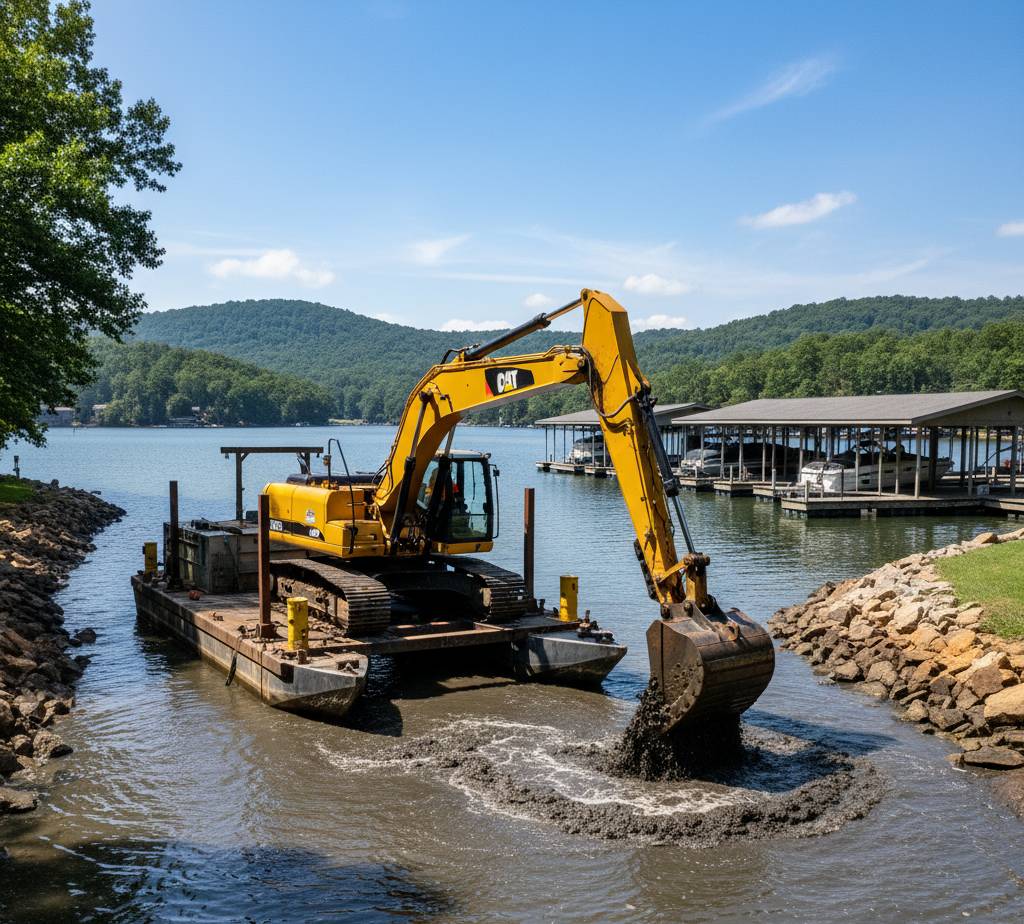
Professional Mechanical Dredging
Lake Norman dock/channel cutting, mountain cove excavation (Fontana/Nantahala), tight HOA access in Wake/Union counties—ideal for near-shore silt removal, muck removal, and targeted lake desilting at docks, ramps, and tight coves across North Carolina.
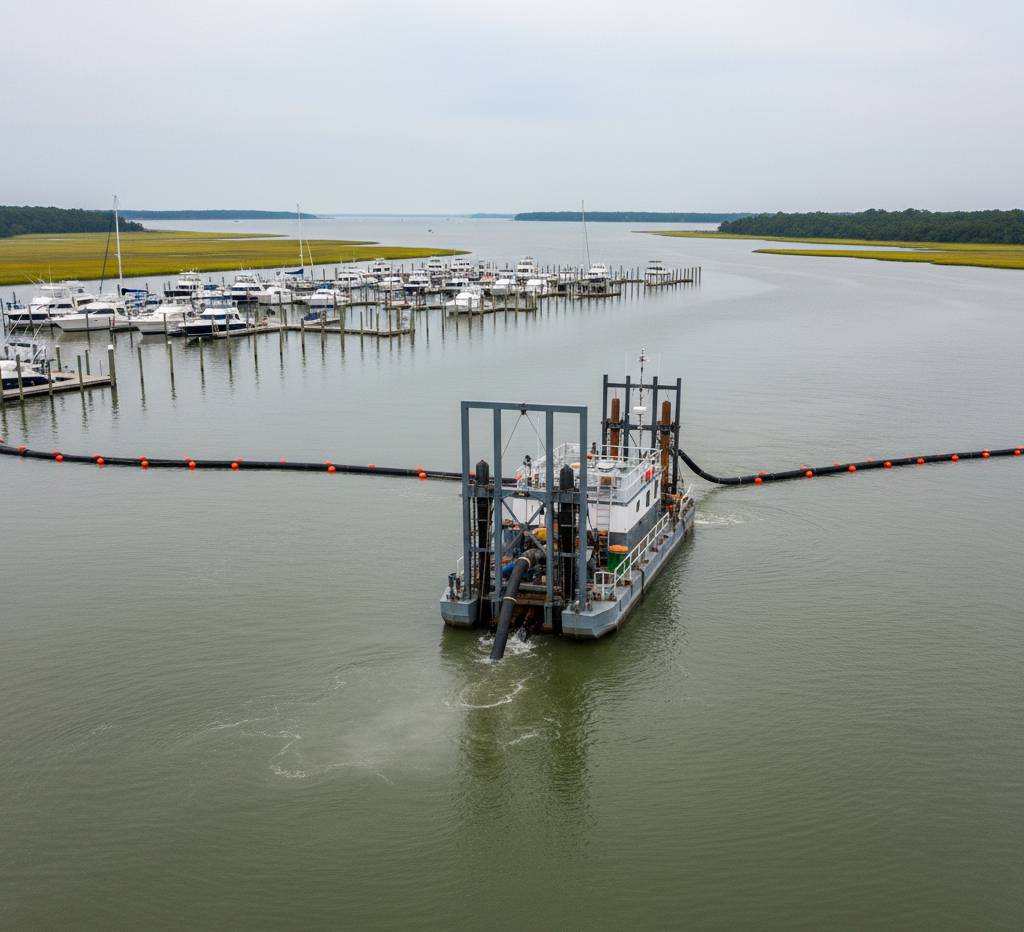
Hydraulic Sediment Removal
Large footprint marinas (Wilmington ICW side canals, New Bern on the Neuse/Trent), fine silt removal (Falls Lake tributary deltas, Tar–Pamlico)—continuous pumping out sediment for longer reaches and sensitive frontage in North Carolina lakes.
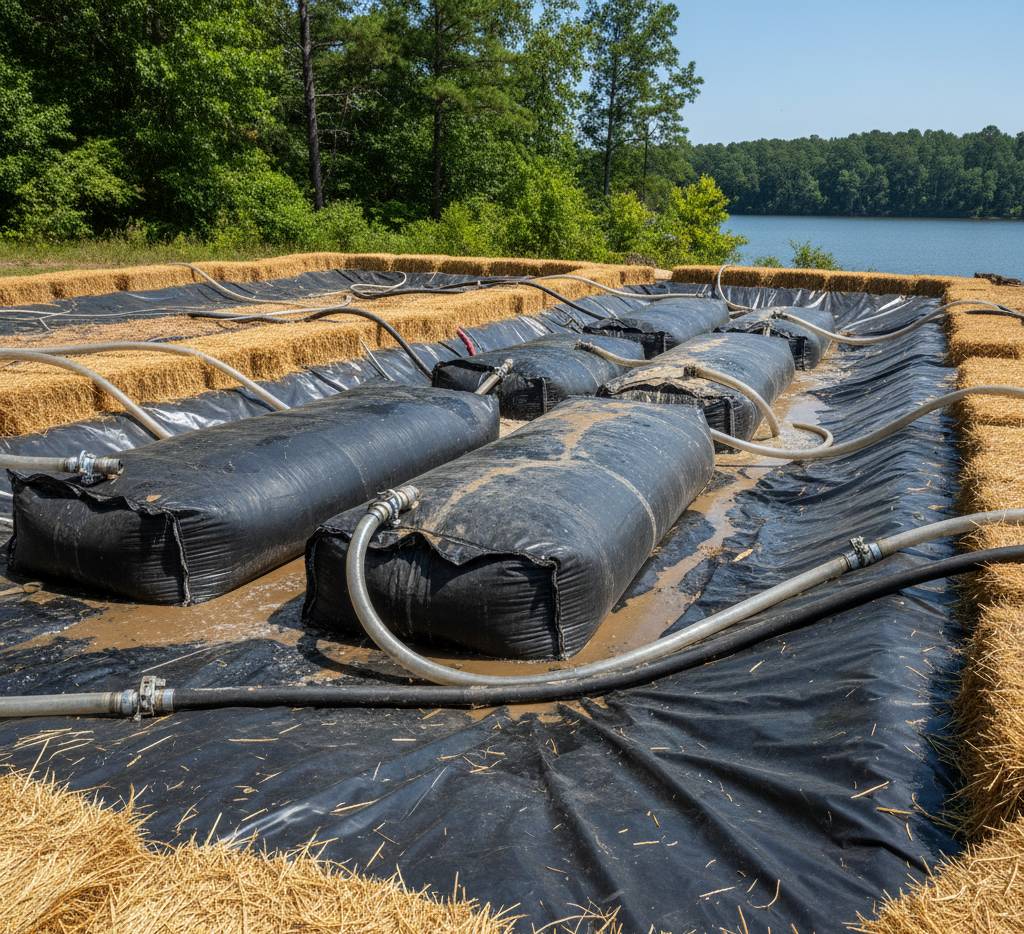
Comprehensive Sediment Management
Volume targets, dewatering pads/geotubes, beneficial reuse (berms/shoreline backfill), disposal logistics by basin (Neuse nutrient rules awareness)—full-cycle sediment management for North Carolina properties, aligning method to budget while maintaining NCDEQ compliance.
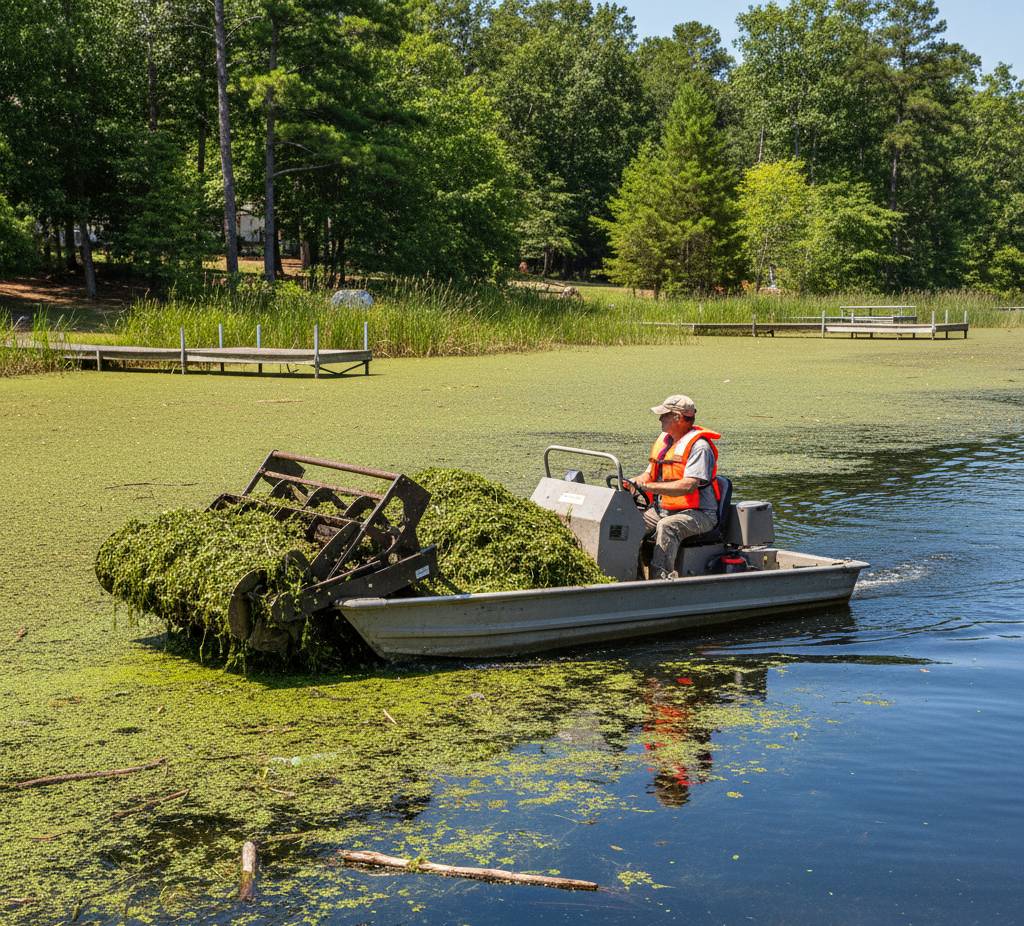
Aquatic Vegetation Management
Duckweed, watermeal, filamentous algae; regionally relevant invasives: hydrilla (noted in Norman/James/Coastal backwaters), alligator weed (coastal plain), elodea/eurasian watermilfoil presence in parts of NC—targeted removal to protect gains after lake dredging.
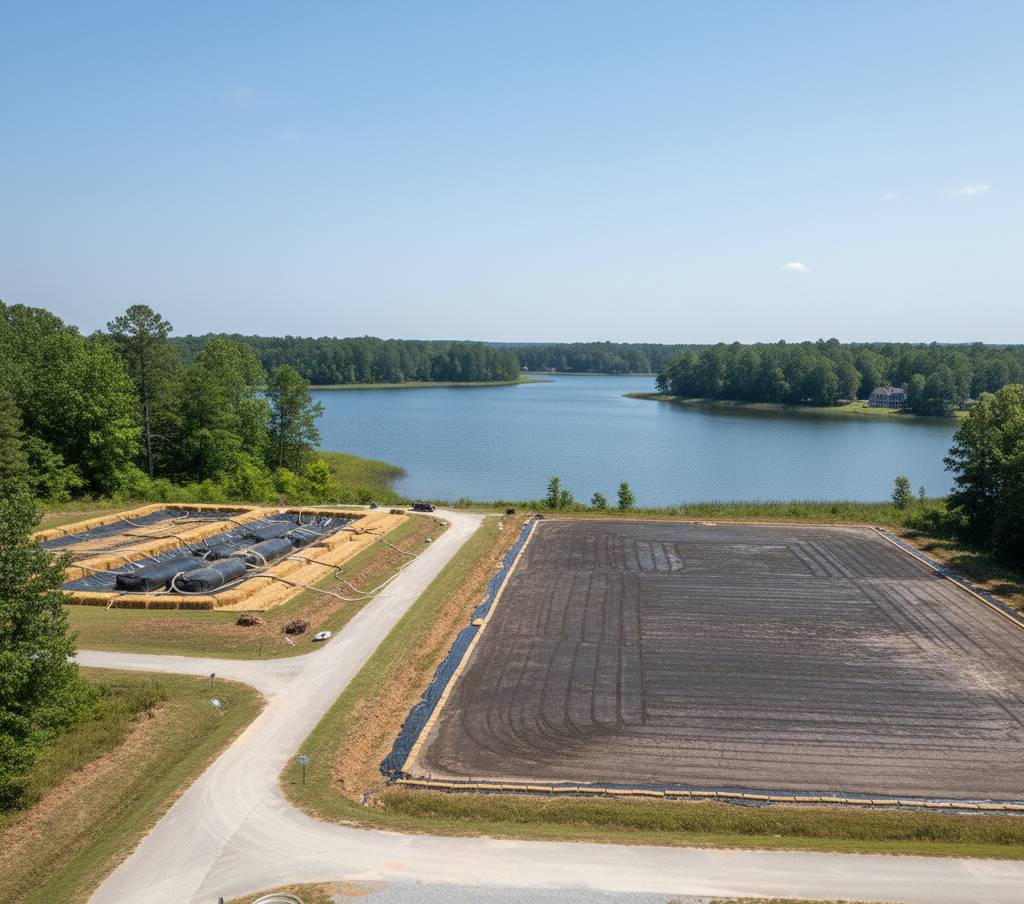
Sediment Dewatering Solutions
Geotextile tube fields in piedmont subdivisions; pad drying where space allows (High Rock/Tillery farm edges)—right-sized dewatering approaches for North Carolina sites that keep sludge removal, desilting, and export efficient.
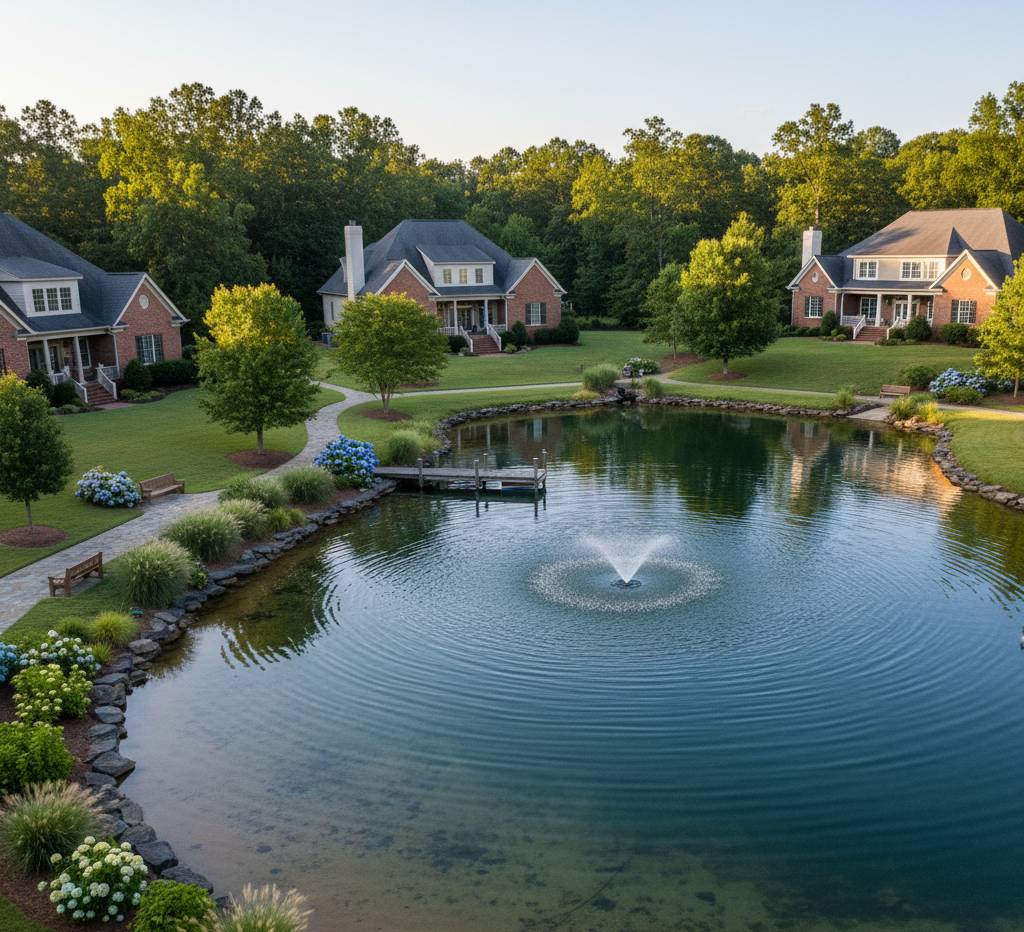
Continuous Lake Management
Inlet delta knockdowns after storm seasons; aeration/circulation on cul-de-sac coves; HOA seasonal checks—post-project lake maintenance for North Carolina properties, including hurricane/tropical rainfall recovery.
Ready to Restore Your Wake Forest Lake or Cove?
Improve water clarity and community lake appearance in Wake Forest—restore stormwater function, prevent HOA issues, and enhance resident enjoyment of your neighborhood lake or pond with Neuse-compliant dredging and tailored solutions.
FAQ
Frequently Asked Questions About Dredging in Wake Forest, North Carolina
How does dredging improve water clarity and algae issues in Wake Forest community lakes?
Dredging removes nutrient-rich sediment that fuels algae blooms in Wake Forest's stormwater ponds and HOA lakes, improving clarity, reducing turbidity, and enhancing water quality for better resident use and ecological health in the Neuse Basin.
Do HOAs or neighborhoods need city approval to dredge in Wake Forest?
Most Wake Forest HOAs require board approval for community lakes, and city stormwater permits may apply for municipal-adjacent ponds—we guide you through HOA governance, local approvals, and NCDEQ processes to ensure compliant, seamless projects.
What factors cause stormwater ponds in Wake Forest to fill with sediment so quickly?
Rapid suburban development, red clay runoff, stormwater inflow, and nutrient loading from yards and streets accelerate siltation in Wake Forest's retention ponds—our targeted dredging restores capacity and prevents frequent maintenance needs.
Do Neuse River Basin nutrient rules affect dredging projects near Wake Forest?
Yes, Neuse Basin regulations focus on nutrient and turbidity control—we incorporate compliant dewatering, spoil testing, and beneficial reuse to meet basin standards for Wake Forest projects near Falls, Jordan, or Harris Lakes.
Can dredged sediment be reused on my property in Wake Forest, or must it be tested first?
Sediment from Wake Forest ponds can often be reused for landscaping or shoreline stabilization after NCDEQ testing for contaminants— we handle testing and permitting to confirm safe, beneficial on-site reuse options.
Do you handle dredging for parks, golf courses, and greenway waterways near Wake Forest?
Absolutely—our team supports municipal parks, golf course ponds, and greenway-linked waterways in Wake Forest, using low-impact methods to maintain public access, water quality, and compliance with local and basin regulations.
Is hydraulic or mechanical dredging better for HOA lakes in Wake Forest?
Hydraulic dredging suits fine silt in larger stormwater ponds near Wake Forest, while mechanical excels for precise work in tight HOA spaces—we evaluate your site's access, turbidity goals, and Neuse compliance for the optimal method.
Serving North Carolina Lakes & Communities
We provide dedicated dredging services across North Carolina's major population centers, Duke Energy lakes, and private lakes from Charlotte to Wilmington.
Charlotte Metro & Union
Lake Norman + Lake Wylie + HOA lakes + rapid suburban growth sediment issues—all share similar lake systems (Catawba chain + foothill lakes), red clay runoff issues, and Duke Energy lake management rules.
Lake Norman & Foothills (I-77 / I-85 Belt)
Marina/shoreline + older lake houses on Catawba chain—speaking “Catawba chain” for urban/HOA vs marina/shoreline, with red clay runoff and Duke Energy rules.
Triangle Core (Raleigh–Durham–Chapel Hill & Wake/Johnston)
Suburban HOA lake clusters, stormwater-fed ponds, Neuse basin rules—same stormwater + HOA pond problem profile, same permitting & Neuse watershed nutrient context for Jordan/Falls/Harris narrative.
Triad & Northern Piedmont
High Rock/Badin/Tillery/Belews lake systems, older lakefront infrastructure, sediment from farmland + feeder streams—these lakes operate like one cultural & waterflow region with Yadkin–Pee Dee governing dredging, plus Triad suburbs share HOA lake/pond issues.
Inner Banks & Coastal Plain (Tar–Pamlico / Neuse)
Tar–Pamlico/Neuse sediment and low-slope dewatering talking points—coastal plain fine silt, tidal influences, and nutrient rules awareness.
Cape Fear & Crystal Coast and High Country
“Edge territories” — outside the Piedmont, special-case dredging (tidal or steep access)—coastal/tidal bids + storm sediment + marsh; mountains = steep grade + tight coves + limited lake access (aim “steep access, narrow coves, mountain spoils”).
Inquire about availability for special projects outside these core North Carolina areas (including neighboring states in the Southeast).